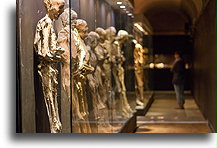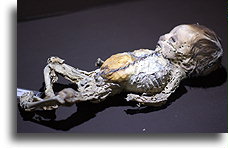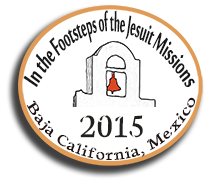Mummies
December 3
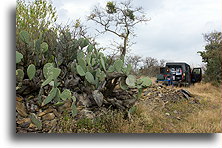
We were tired of discomforts of last two nights spent in the cities. The coming night we decided, to spend somewhere closer to the nature. It was not that simple. For a long time, in the dark we were looking for a suitable place, and finally, it is hard to say where, but we stopped in a clearing on a hill above a country road. It was a peaceful and secluded location. Lights of the city were in the distance below us. A new day did not greet us happily, we were in the mountains, it was cool, 60ºF / 15ºC, and in it was raining a little bit. After the breakfast, we set off to see the next ancient ruins.
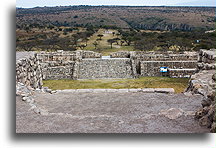

These ruins were discovered very recently, in 1998. The Otomí civilization raised here pyramidal structures, "sunken patios" and built the road about 1 km long. Astronomical knowledge of this culture was reflected in the location and the shapes of the structures. They are directed to observe the sun and moon in times of equinoxes and solstices. Around AD 900, Otomi civilization began to collapse, the city was soon abandoned, to be discovered again a thousand years later. Archaeological excavations are located entirely on private land. Over the years, ruins were not plundered. Thanks to this, archaeologists here could make some interesting discoveries here.
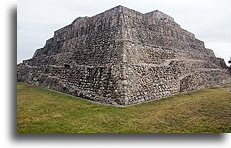
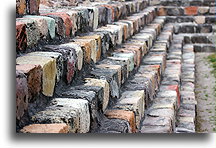
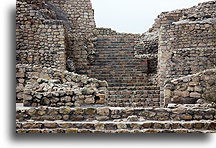
Cańada de la Virgen (the Canyon of the Virgin) is one of northernmost archaeological sites in Mesoamerica. It is still only partially excavated; as we were told there are many more unexcavated ruins nearby. Archeologists believe that Cańada was a ritual and ceremonial center that represented a position of authority in its region. The smaller of pyramidal structures, complex B, was built to express Otomi's belief in duality of the heaven and earth, male and female, or Sun and Moon. At that site, archeologists discovered remains of a 7 years old girl placed ritually in a circle of stones and accompanied by the offerings of pottery, a fragment of a seashell and a small coyote. She was wearing a necklace. It must have been an important body to Otomi people because she received special funeral treatment. Her remains were interred prior to disarticulation of the body, when the decomposition was sufficiently advanced for the body to be compressed in to tight funeral bundle.
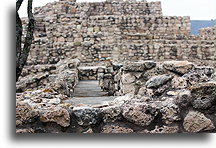
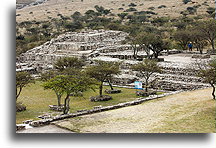
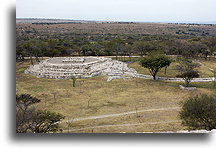
Larger and more impressive structure in Cańada (complex A) has westward orientation and was used for celestial observations. Deep, submerged patio is accessible by climbing many steep stairs up and down. Various colors of quarry, such as green, red, orange, and yellow, were used here for the construction. The pyramid is topped with a small temple. It is a place where another body was discovered. The tomb located under the floor was probably the burial place of the ruler. His remains wrapped in a funeral shroud had an ax wounds in the head, his jaw and ribs were broken. The legs were amputated below the knee. As you can see, this man has been sacrificed. The ceremony took place, when he had 52 years. This number had magical meaning for Otomi, it marked the end of the cycle. Due to location, a man called el Jerarca or the Hierarch was buried with a dog and pieces of pottery.
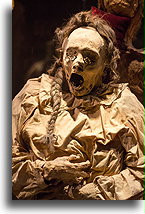
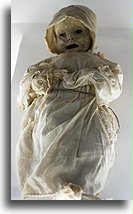
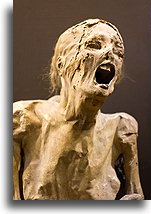
In the evening, we arrived to Guanajuato, a Spanish colonial city with many buildings in baroque and churrigueresque architectural styles. However, the most interesting for us in town was El Museo De Las Momias ("The Museum of the Mummies"). The exhibition here shows the naturally mummified bodies that were exhumed from the local cemeteries. This is an unusual experience to walk between dozens of human corpses. You have impression that the standing along the walls people still look at you. You can find there not only adults, but also children and mummified infants. According to the custom, women were buried with her hands under the breast, men with their hands on their bellies. One women however, has her arms in a completely different pose. Hands are raised up, palms on the face. That suggests that perhaps this person was buried alive and woke up in the grave.
